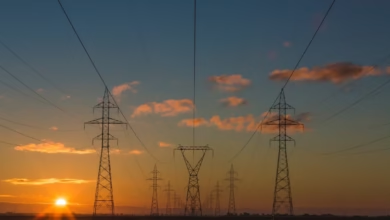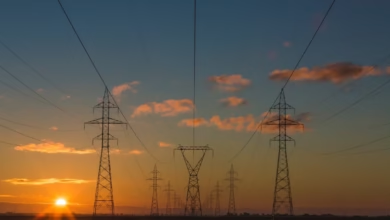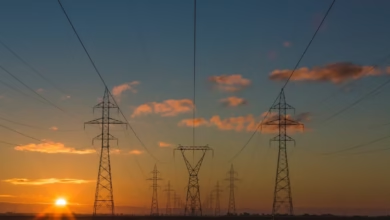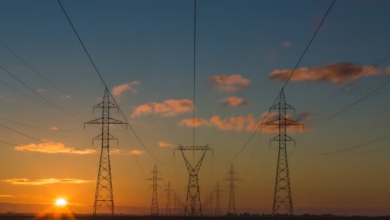Navigating the Global Energy Landscape: Insights into Energy Exports and Imports in a Transitioning Market

In an era marked by a growing awareness of climate change and the urgent need for sustainable practices, the global trade of energy resources has taken center stage. Energy exports and imports are not merely transactions; they are vital components that shape economies, influence energy security, and drive advancements in energy policy. As countries navigate the complexities of energy markets, the dynamics of this trade are evolving rapidly. This article delves into the multifaceted world of energy trade, exploring the balance between renewable energy and fossil fuels, the innovations in energy transportation such as smart grids, and the implications for the future of energy markets. By examining these elements, we aim to provide insights into how global energy trends are influencing energy investments and shaping a more sustainable energy transition. Whether through hydropower, solar power, wind energy, or emerging technologies like hydrogen energy and carbon capture, the quest for energy efficiency and security is more critical than ever. Join us as we unpack the intricate web of energy exports and imports that fuel our world today.
- 1. The Dynamics of Global Energy Trade: Understanding Energy Exports and Imports
- 2. Renewable Energy vs. Fossil Fuels: Shaping the Future of Energy Markets
- 3. Innovations in Energy Transportation: Smart Grids and the Energy Transition
1. The Dynamics of Global Energy Trade: Understanding Energy Exports and Imports
The global energy trade is a complex system characterized by the dynamic interplay of energy exports and imports. As countries strive for energy security and economic growth, understanding these dynamics is essential for navigating the evolving energy landscape.
Energy exports primarily consist of fossil fuels, renewable energy, nuclear energy, and thermal energy. Countries rich in resources such as oil and gas engage in substantial exports, significantly influencing global energy markets. For instance, nations like Saudi Arabia and Russia are major players in fossil fuel exports, while countries like Germany and China are leading in renewable energy technologies, exporting solar power and wind energy systems.
On the other hand, energy imports are critical for countries that lack sufficient domestic resources. These nations often rely on diverse energy sources, including imported fossil fuels, hydropower, and increasingly, renewable energy solutions. The growing demand for energy storage and energy efficiency technologies is reshaping energy imports, as countries seek to bolster their energy security and reduce dependence on volatile fossil fuel markets.
The energy transition towards greener sources is also altering the dynamics of global energy trade. With initiatives aimed at combating climate change, nations are investing in energy innovations such as hydrogen energy, bioenergy, and carbon capture technologies. As countries implement energy policies that favor renewable energy, the demand for energy-related investments is surging, creating new opportunities in energy transportation and distributed energy systems.
Emerging global energy trends highlight the significance of energy R&D, smart grids, and electric vehicles in transforming how energy is produced, distributed, and consumed. As these innovations evolve, they will further impact energy economics, influencing trade patterns and investment flows.
In summary, the dynamics of global energy trade are continuously evolving, driven by the interplay of energy exports and imports, technological advancements, and the urgent need for sustainable solutions. Understanding these trends is pivotal for stakeholders aiming to navigate the complexities of the global energy market effectively.
2. Renewable Energy vs. Fossil Fuels: Shaping the Future of Energy Markets
The global energy landscape is experiencing a significant transformation as the world increasingly shifts from fossil fuels to renewable energy sources. This transition is not only driven by the urgent need to address climate change but also by advancements in energy technologies and evolving energy policies. Renewable energy, which includes solar power, wind energy, hydropower, and bioenergy, is gaining traction due to its sustainability and potential for energy security.
Fossil fuels, traditionally the backbone of energy markets, are facing growing scrutiny as countries aim to reduce their carbon footprint. The energy transition is reshaping energy economics, with investments in renewable energy surpassing those in fossil fuels. Energy innovations such as energy storage solutions and smart grids are further facilitating this shift. These technologies enhance energy efficiency and enable the integration of distributed energy resources, making renewable energy more viable and reliable.
Nuclear energy also plays a role in this evolving scenario, providing a stable energy source that complements renewables, especially in the context of energy storage and thermal energy production. However, the debate around nuclear energy remains complex, with safety concerns and waste management continuing to challenge its acceptance.
As global energy trends evolve, the focus is increasingly on energy exports and imports of renewable resources. Countries rich in green energy potential can export surplus energy, while others may rely on energy imports to meet their needs. This dynamic is evident in the growing market for hydrogen energy, which is emerging as a clean fuel alternative for industries and electric vehicles.
Carbon capture technologies are also becoming integral in reducing emissions from fossil fuels, allowing for a more gradual transition while maintaining energy supply. Meanwhile, the push for offshore energy, particularly in wind and solar, is expanding the possibilities for energy generation.
In summary, the competition between renewable energy and fossil fuels is shaping the future of energy markets. The shift towards greener energy not only addresses climate change but also influences energy policy, energy investment, and energy transportation. As nations navigate this transition, the focus will remain on enhancing energy security, achieving energy efficiency, and driving forward energy R&D to support sustainable growth.
3. Innovations in Energy Transportation: Smart Grids and the Energy Transition
The global energy landscape is undergoing a significant transformation driven by the urgent need for sustainable practices and the transition to greener energy sources. Innovations in energy transportation, particularly through the implementation of smart grids, are pivotal in facilitating this energy transition. Smart grids integrate advanced technology to enhance the efficiency and reliability of energy distribution networks, enabling better management of both renewable and fossil fuel energy resources.
As countries shift towards renewable energy sources such as solar power, wind energy, and hydropower, smart grids play a crucial role in optimizing energy storage and distribution. These systems allow for the seamless integration of distributed energy resources, making it easier to harness green energy from various sources. For instance, during periods of high solar or wind energy generation, excess energy can be stored and redistributed when demand peaks, thus improving energy efficiency and reducing reliance on thermal energy and fossil fuels.
Furthermore, smart grids facilitate the incorporation of electric vehicles (EVs) into energy markets. With the rise of EVs, energy transportation must evolve to support the increased demand for electricity. Smart grids can help manage charging stations, optimize energy flow, and ensure energy security by balancing supply and demand in real-time. This not only enhances energy efficiency but also contributes to the reduction of greenhouse gas emissions, aligning with global energy trends aimed at combating climate change.
Energy innovations such as carbon capture technologies further support this transition by minimizing the environmental impact of energy production. By retrofitting existing fossil fuel plants with carbon capture solutions, the energy sector can continue to provide reliable energy while reducing its carbon footprint. Additionally, hydrogen energy is emerging as a versatile energy carrier, offering a promising solution for energy storage and transportation.
As countries navigate the complexities of energy imports and exports, energy policy will play a critical role in shaping the future of energy investments. Policymakers must prioritize energy R&D to promote advancements in energy transportation and support the shift toward a more sustainable and resilient energy infrastructure. By fostering innovation and collaboration within the energy sector, nations can better respond to evolving global energy demands and secure a cleaner, more efficient energy future.
In summary, the integration of smart grids and advancements in energy transportation are essential components of the ongoing energy transition. These innovations pave the way for a sustainable energy future, optimizing the use of renewable resources while ensuring energy security and efficiency in a rapidly changing global energy landscape.
In conclusion, understanding the dynamics of global energy trade is crucial as countries navigate the complexities of energy exports and imports. As we move towards a more sustainable future, the competition between renewable energy and fossil fuels will shape the energy markets of tomorrow. Innovations in energy transportation, including smart grids and advancements in energy storage, are pivotal in facilitating the energy transition and enhancing energy efficiency.
The ongoing global energy trends highlight the importance of diversifying energy sources, such as hydropower, bioenergy, and nuclear energy, while also investing in clean technologies like carbon capture and hydrogen energy. With the rise of electric vehicles and the growing demand for green energy, energy policy will play a vital role in ensuring energy security and fostering energy R&D.
As nations prioritize climate change mitigation, the focus on offshore energy, solar power, and wind energy will become increasingly important. Ultimately, strategic energy investments and a commitment to distributed energy solutions will determine the future landscape of energy economics and the global energy market. Embracing these changes will not only drive efficiency and innovation but also secure a sustainable energy future for generations to come.
References:
[Include relevant sources here]




